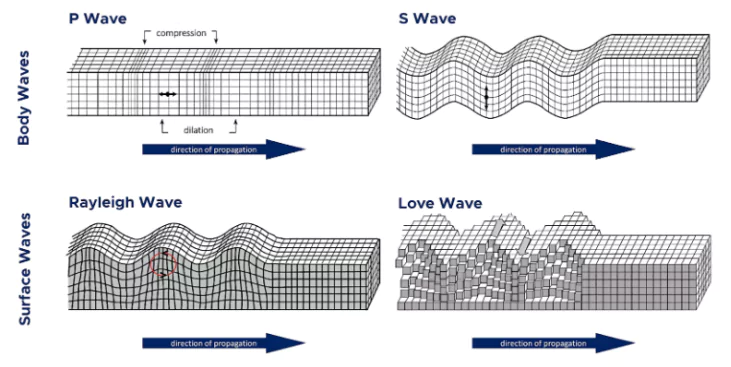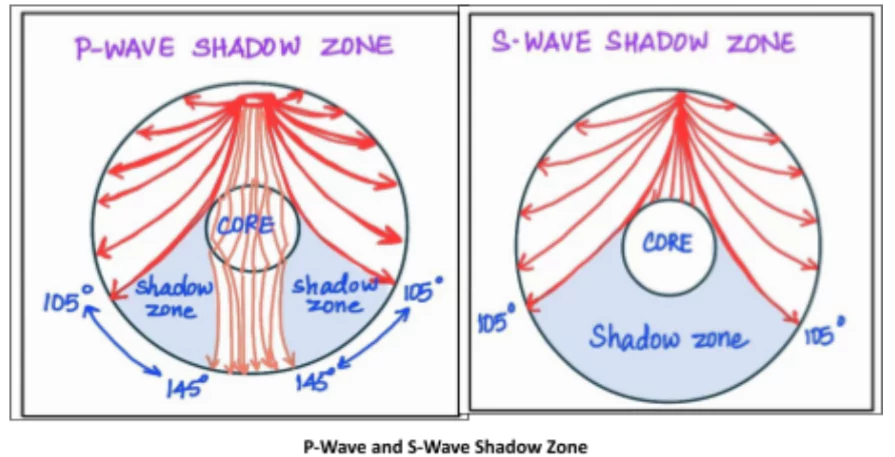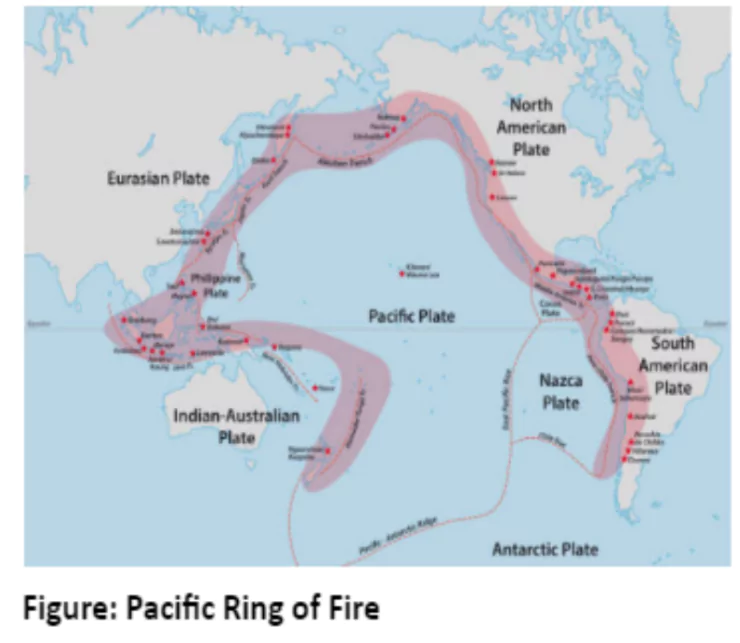![]() April 26, 2024
April 26, 2024
![]() 1321
1321
![]() 0
0
An earthquake is the shaking of the earth triggered by the release of energy, which creates waves radiating in all directions. All natural earthquakes arise within the lithosphere, i.e., up to a depth of 200 km from the earth’s surface.

Speed of different waves: primary waves > secondary waves > love waves > rayleigh waves.
| Type of Wave | Wave Motion | Speed | Mediums Travelled Through | Shadow Zone |
| P-Waves | Body wave, Longitudinal (particle vibrates parallel to the wave direction) |
Faster than S-waves | Solid, Liquid, Gas | Yes, between 105° and 145° from epicentre |
| S-Waves | Body wave, Transverse (particle vibrates perpendicular to the wave direction) |
Slower than P-waves | Solid | Yes, beyond 105° from the epicenter |
| Love (L-Waves) | Surface wave, Transverse | Faster than Rayleigh waves | Solid | NA |
| Rayleigh (R-Waves) | Surface waves, Both Transverse & Longitudinal | Slower than Love waves | Solid(faster), Liquid(slower) | NA |

 Explosion Earthquakes: Human-induced seismic events from explosions.
Explosion Earthquakes: Human-induced seismic events from explosions. | Must Read | |
| Current Affairs | Editorial Analysis |
| Upsc Notes | Upsc Blogs |
| NCERT Notes | Free Main Answer Writing |
Earthquakes are natural phenomena that can cause significant damage and loss of life. They result from the sudden release of energy in the Earth’s crust, often along fault lines. Preparedness, early warning systems, resilient infrastructure, and collaboration between scientists, engineers, governments, and the public are essential for effective earthquake risk reduction and response efforts.
<div class="new-fform">
</div>
Latest Comments